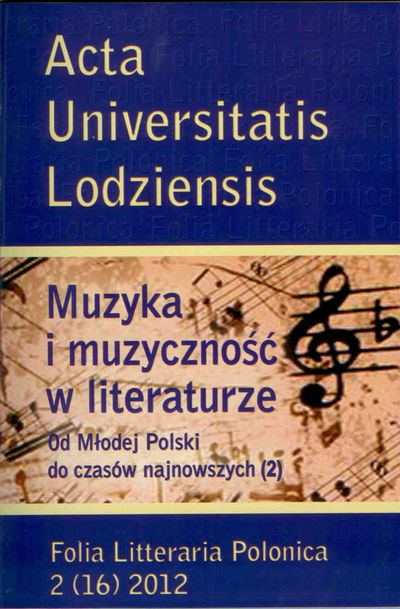Suita Jonathana Littella — o konstrukcji Łaskawych
DOI:
https://doi.org/10.18778/1505-9057.16.02Abstrakt
The article addresses the issue of various interpretative contexts of Jonathan Littell’s best-selling novel The Kindly Ones (Les Bienveillantes). In particular, it deals with ethical and rhetorical consequences of the novel’s structure. The book’s form is based on a baroque suite – thus, the successive chapters are entitled: Toccata, Allemande I and Allemande II, Courante, Minuet (roundel), Aria and Gigue. The analysis of the meaning of the technique employed by Littell yields a conclusion that there is no relation between the plot structure and the suite form. The ‘musical’ concept is used only to strengthen the fictionality of the novel. This way, Littell emphasizes that the foundation on which the monologue of his hero is built is at the same time documentary and purely ‘literary’. Thus, Littell’s novel only ‘pretends’ to be ‘a musical literary text’ – literature constructed by using musical forms. The last issue addressed in the article is the ethical ambivalence of Littell’s concept. Is it appropriate to ‘compose a suite about the Holocaust’? Does it locate The Kindly Ones near the sublime or kitsch? Or maybe both?
Pobrania
Pobrania
Opublikowane
Jak cytować
Numer
Dział
Licencja

Utwór dostępny jest na licencji Creative Commons Uznanie autorstwa – Użycie niekomercyjne – Bez utworów zależnych 4.0 Międzynarodowe.











